Classic chain restaurants that flopped
Finance
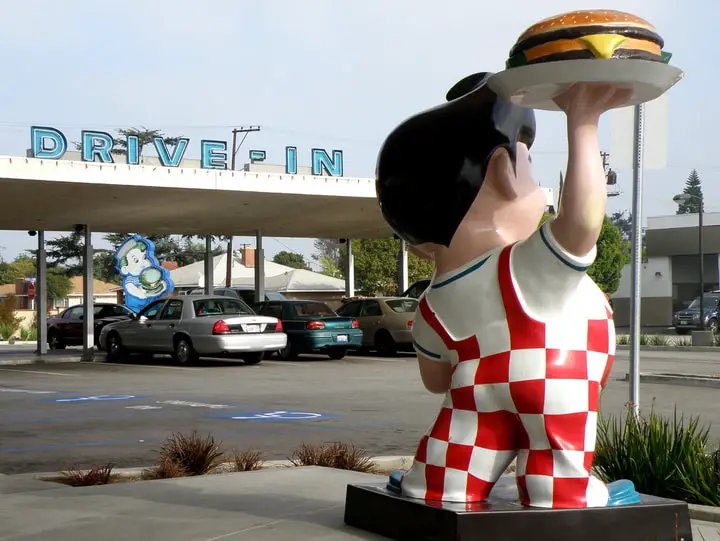
1. White Tower
Laurie Avocado/Flickr
A lot of things can lead a restaurant to go belly up — changing consumer tastes, new ownership, expanding too rapidly, or just not having good food. Whatever the reason the following classic restaurants flopped, there are still some fans that reminisce about eating at these joints as children. Is your old favorite on our list?
These White Tower Hamburger restaurants really remind me of another kind of fast-food chain… Could it be White Castle? Turns out White Castle thought so too and filed a lawsuit against White Tower. In an appeals document regarding White Tower v. White Castle, it says the appeal asks if White Tower “appropriated a trade name and advertising slogan…”
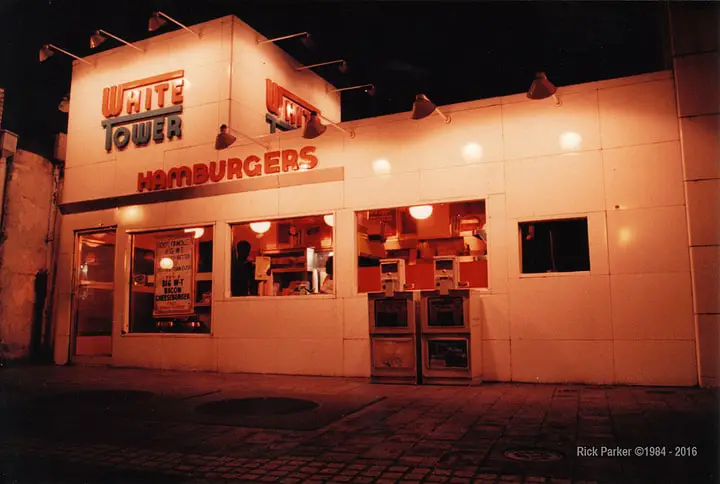
Rick Parker/Wikimedia Commons
“And has knowingly imitated a building of peculiar style.” White Tower was similar to White Castle in that it served similar food and had the same sort of all white hygienic looking buildings and interiors.
NEXT: The country singer that sang on hits like “The Gambler” and “Islands In The Stream” was involved with this restaurant.
2. Kenny Rogers Roasters
This restaurant was a collaboration between country singer Kenny Rogers and Kentucky’s former governor, John Y. Brown, says the Kenny Rogers Roasters. The chicken-centric restaurant first opened its doors in Coral Springs, Florida in 1991. The chain was famously featured in a Seinfeld episode — Kramer becomes upset with the restaurant’s bright neon sign outside his apartment.
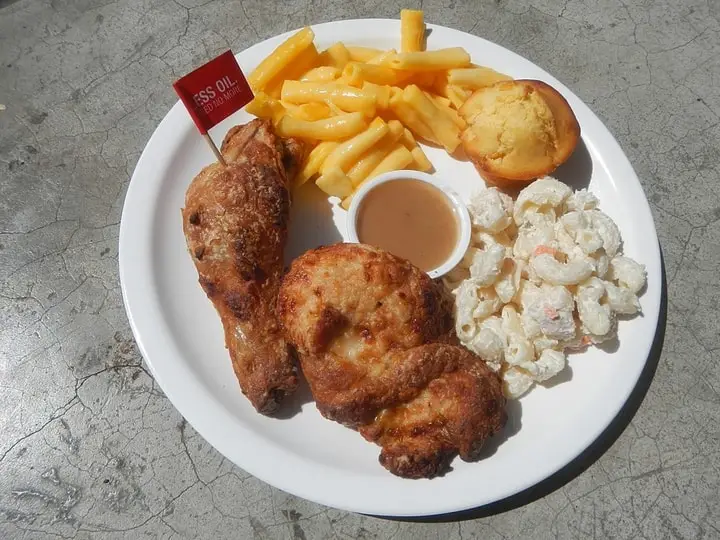
Judge Floro/Wikimedia Commons
Kramer gets over this inconvenience when he becomes addicted to its rotisserie chicken. Kenny Rogers Roasters got good reviews but went bankrupt in 1998 and sold to hot dog chain Nathan’s, says How Stuff Works.
NEXT: Like Kenny Rogers Roasters, this restaurant also had some screen time. You might recognize it from Fast Times at Ridgemont High.
3. All American Burger
This hamburger chain opened its doors August 1968 in Los Angeles says an SEC document regarding All American Burger. You might recognize the burger joint in Fast Times at Ridgemont High — character Brad Hamilton gets fired from there after telling off a rude customer. Brad says, “Mister, if you don’t shut up I’m gonna kick 100 percent of your a**!”
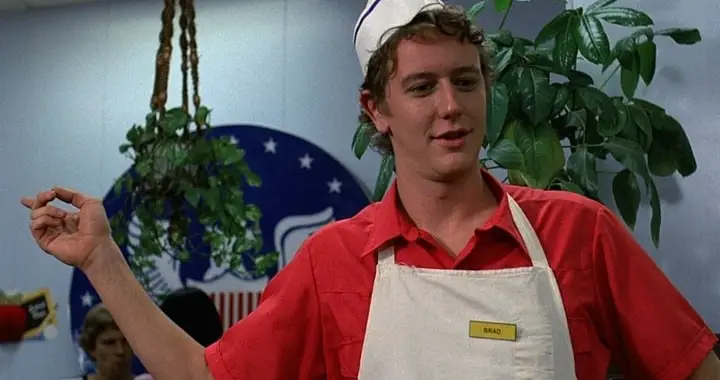
IMBd
The restaurant was known for its quarter-pound All American Burger among other artery-clogging goodies. The sole surviving All American Burger was in Los Angeles at 7660 West Sunset Boulevard but was replaced by a Chipotle in 2010, says Weho Daily and LA Weekly.
NEXT: Planet Hollywood owned this now-defunct restaurant.
4. All-Star Café
This sports-themed eatery owned by Planet Hollywood had only 10 locations but did have some major athletes investing in the family-friendly concept, says Business Insider. (That includes Andre Agassi, Wayne Gretzky, and Joe Montana.) The first one opened in New York City’s Time Square in 1995, said St. Petersburg Times.
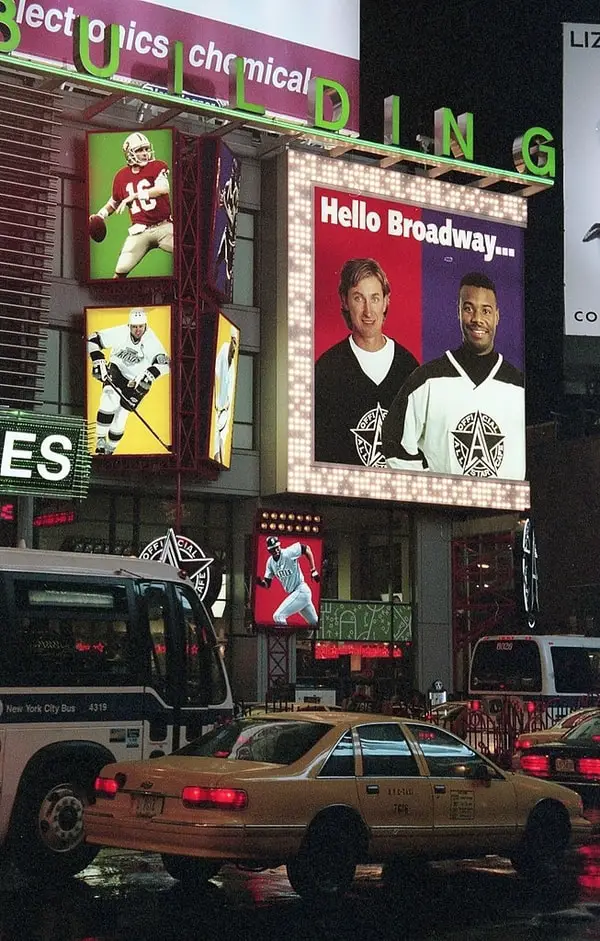
RickDikeman/Wikimedia Commons
All-Star Café took the hospitality idea a step further with a 1,705-room hotel opposite Madison Square Garden, said the Orlando Sentinel in 1997. When the paper reached out to Planet Hollywood for comment, it said: “We would like a hotel for each of our brands.” All-Star Café had a good run but ended up closing in 2007.
NEXT: The last location advertised itself as the “Last One Standing.”
5. Howard Johnson’s
Business Insider says this was both a hotel and restaurant chain that started in the 1920s. Howard Johnson’s grew in popularity — by the 1960s there were thousands of locations! Some things just don’t last forever it turns out. Howard Johnson’s hotels were sold off and its last restaurant closed in 2017, says Business Insider.
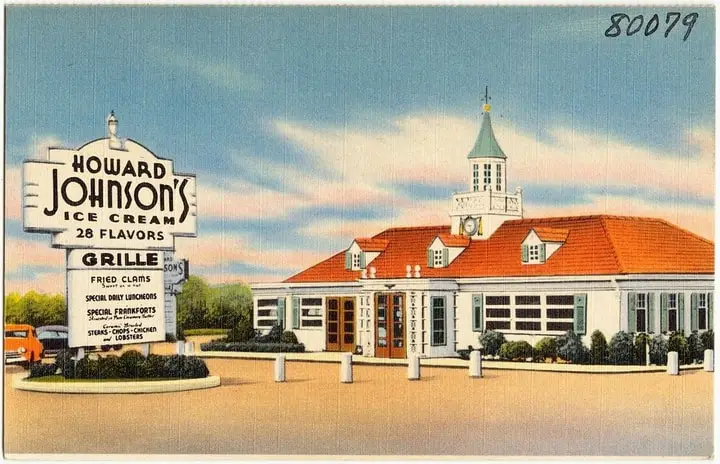
Boston Public Library Tichnor Brothers collection 80079/Wikimedia Commons
The last one standing (its sign literally said “Howard Johnson’s: Last One Standing”) was in Lake George, New York, says Eater. The Eater article “The Last Howard Johnson’s in the Universe” describes a vacant parking lot of the Lake George location — something that would have been unheard of during the restaurants’ heyday.
NEXT: This restaurant had been accused of using a racist name and iconography.
6. Sambo’s
Upon pancake house Sambo’s opening in 1975, some claimed its name and the iconography it used were racist, said The Daily Beast. It was a large operation with 1,117 locations in 47 states and lots of breakfast options. The name Sambo’s came from a controversial 1899 children’s book called The Story of Little Black Sambo.
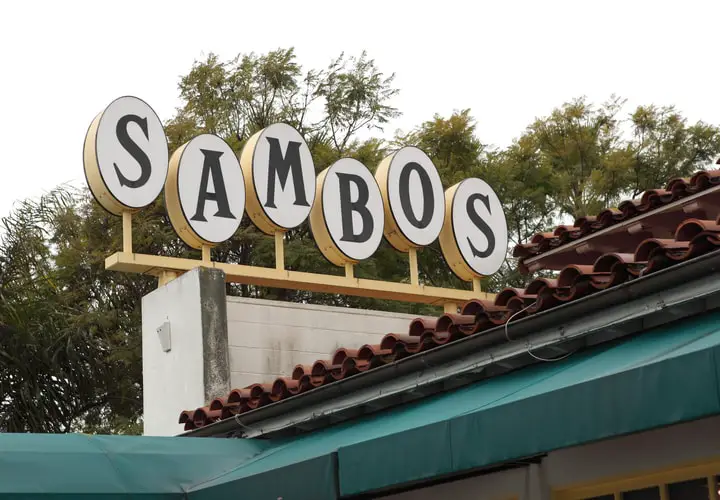
Sam Howzit/Flickr
“And far from playing down the connection to Bannerman’s book, Sambo’s played it up. The restaurant’s original mascot was — you guessed it — a dark-skinned South Indian boy,” writes The Daily Beast. There’s still one Sambo’s in Santa Barbara, California.
NEXT: This restaurant’s motto was “A Celebration of Food!”
7. Chi-Chi’s
The Mexican fare chain grew to over 200 locations between 1975 and 1986. Increased competition caused the chain to start to close locations — there were about 144 stores in 2002, said Business Insider. Chi-Chi’s filed for bankruptcy the following year. Something else happened just a month following the bankruptcy announcement that led to Chi-Chi’s demise.

Mehlen Romain/Wikimedia Commons
In a Pittsburgh Chi-Chi’s, onions served there set off a Hepatitis A outbreak. There were 660 sickened and four killed due to this unfortunate outbreak, said Business Insider. Just 65 locations had existed at the time and they all closed within a year.
NEXT: This East Coast steakhouse specialized in prime steak and seafood.
8. Valle’s Steakhouse
This steakhouse opened in 1933 on the East Coast but ended up closing its doors in 2000, said Business Insider. That’s a long run for a restaurant chain! Headquartered in Newton, Massachusetts, Valle’s Steak House featured a lot of prime steaks and seafood (especially Maine lobsters). Probably wasn’t a good place for vegetarians…
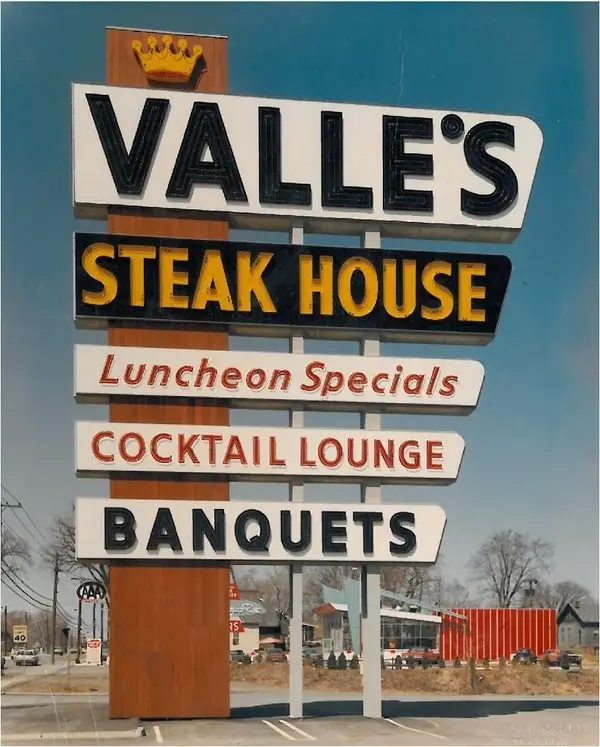
Pat Boni/Wikimedia Commons
Valle wasn’t just the name of this now extinct U.S. steakhouse but also the name of its founder, David Valle. There were several reasons for its decline, some of which include the fact that Republican Senator Susan Collins of Maine used to love to use Valle’s as an example for how to not do business.
NEXT: You might recognize this restaurant’s mascot, a boy wearing checkered overalls and a shirt reading “Big Boy.
9. Bob’s Big Boy
You probably have seen the Bob’s Big Boy mascot — a boy wearing checkered overalls and a shirt reading “Big Boy.” Its imagery and menu invoke nostalgia in the Baby Boomer generation that grew up alongside brands like Big Boy. This nostalgia hasn’t been enough to keep the brand thriving, says the San Diego Union-Tribune.
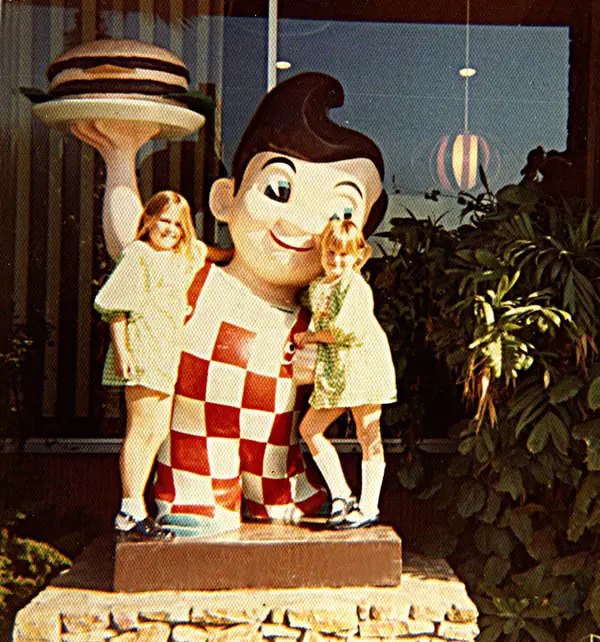
marianne muegenburg cothern/Flickr
After San Diego’s Big Boy shuttered its doors, the Union-Tribune wrote: “Nostalgia for the Bob’s Big Boy of yesteryear — and the portly fiberglass boy with the red-checkered overalls — is not likely to sustain an aging brand at a time when fast casual gourmet burger chains are exploding throughout California and the rest of the country.”
NEXT: Unlimited food and bottomless drinks were this eatery’s style.
10. Beefsteak Charlie’s
This photograph shows the York Turf Writers Association outside of a Beefsteak Charlie’s. The boys probably filled up on Beefsteak delicacies like unlimited shrimp and salad, bottomless pitchers of beer and platters of ribs under $20.00. The eatery was all but gone by the mid-1990s. There are a couple of locations in New York.
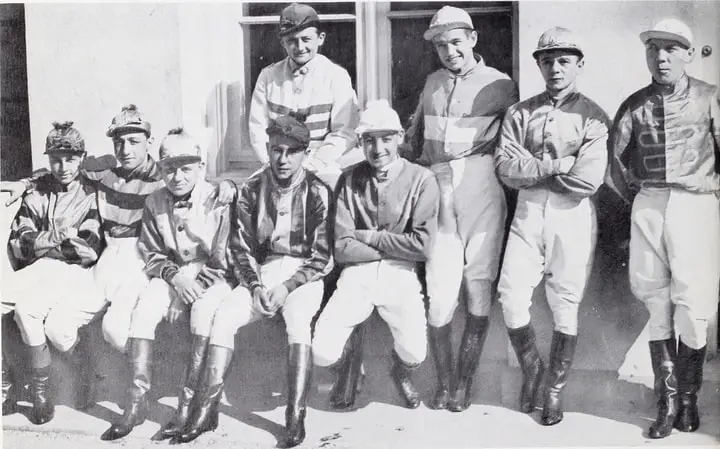
Internet Archive Book Images/Flickr
The Bklyner writes: “There are still two locations in Manhattan and one on Long Island, but it’s unknown if they have any relationship to the chain that sprung out of the Manhattan restaurant first opened in 1910.”
NEXT: This chain was the first to include toys in kids’ meals.
11. Burger Chef
Seems like a lot of burger joints can’t make it in the modern U.S. market, huh? Burger Chef was McDonald’s competitor back in its heyday, but McDonald’s has clearly survived the changes. Burger Chef’s problem was that it overexpanded and had to sell to fast-food chain Hardee’s in 1981, says Business Insider.
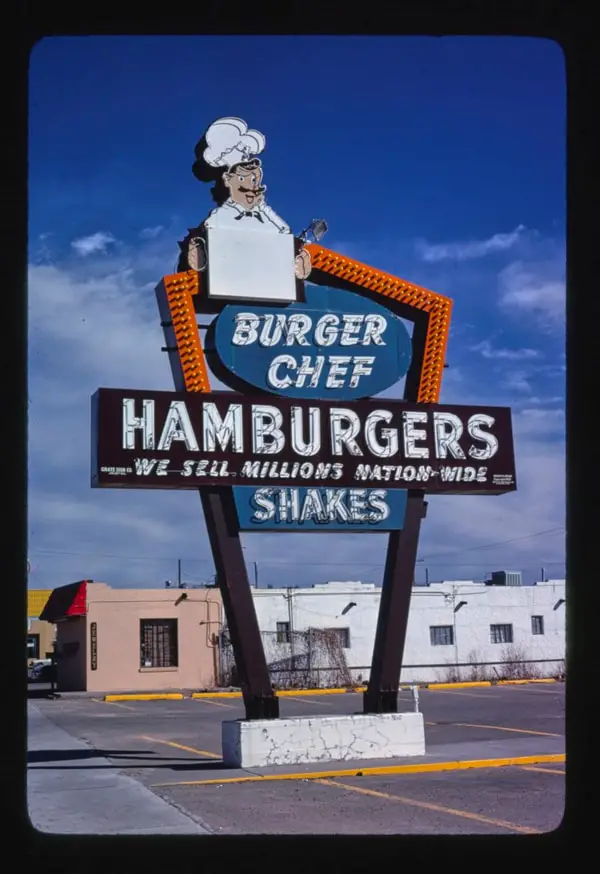
John Samuel Margolies/Library of Congress
Before the toys in McDonald’s happy meals, Burger Chef was putting toys in children’s meals. Younger consumers might only recognize Burger Chef from its appearance on the TV show Mad Men. The ad men and woman of the show took on the burger joint as a client, says TIME.
NEXT: The concept for this famous restaurant chain was borrowed from a German eatery.
12. Horn & Hardart
“It was once the world’s largest restaurant chain,” writers the Smithsonian. “Serving 800,000 people a day. It was Horn & Hardart, and its cavernous, waiterless establishments represented a combination of fast-food, vending and cafeteria-style eateries.” The chain’s possible appeal was that it brought high tech and inexpensive food to a low tech era in 1902.
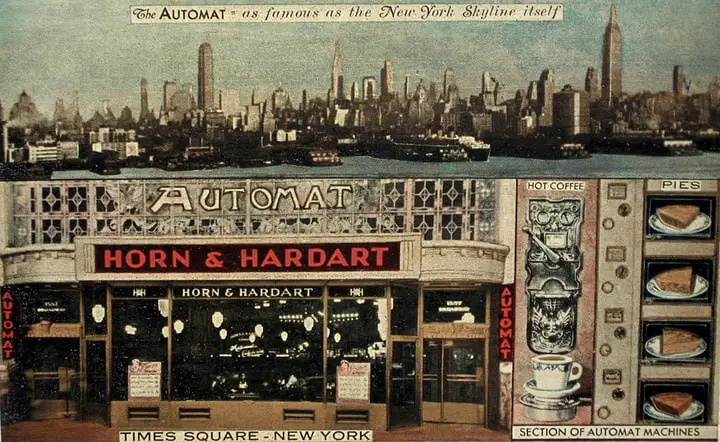
Lumitone Photography/Wikimedia Commons
Now many restaurants have established a fast-casual and even cafeteria like food service setup like Horn & Hardart had. Unfortunately, Horn & Hardart fell victim to consumers’ changing tastes, people moving into suburbs and the rise of fast-food, says The Smithsonian.
NEXT: This place is best known for creating the Klondike Bar.
13. Isaly’s
It all started with a dream and a copper cheese kettle. Isaly’s website says that its story began in 1833 when Swiss cheesemaker Christian Isaly and family settled in Monroe County, Ohio. Generations of Isaly’s family carried on the Swiss cheesemaking tradition, eventually creating Isaly’s Dairy Companies. The company sold dairy, deli and ice cream products.
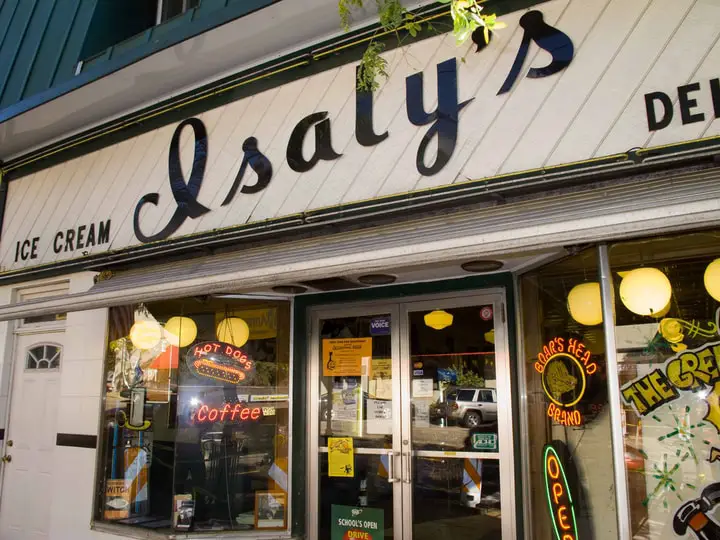
Jim Rhodes/Flickr
The question “What would you do for a Klondike Bar?” was first asked by Isaly’s. The company created the iconic — and delicious — ice cream bar that is still enjoyed by consumers today. Changing consumer tastes led to the closing of many Isaly’s but several still remain open.
NEXT: Burger King wasn’t happy that this Argentine brand had a logo similar to theirs.
14. Pumper Nic
This isn’t a U.S.-based brand like the majority of restaurant flunks on our list. Pumper Nic (named after the German bread, pumpernickel) was created in Argentina and is now considered a cult classic. The hamburger chain was created by food industry executive, Alfredo Lowenstein. Like White Tower, Pumper Nic resembled another fast food chain.
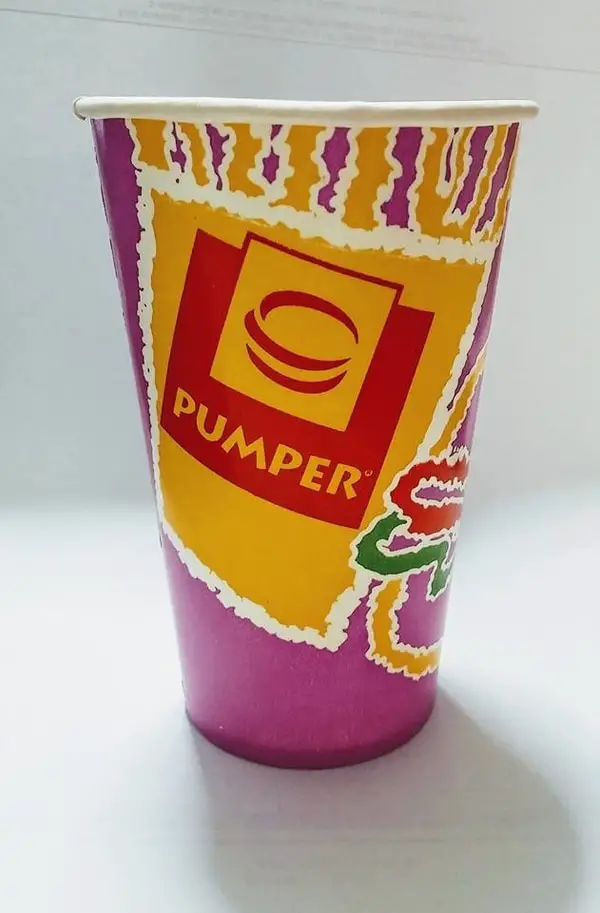
Silvia Caffarini/Wikimedia Commons
Burger King took notice of the similarities between Pumper Nic’s logo and theirs and they weren’t happy about it. A lawsuit from Burger King forced Pumper Nic to change its logo and shorten its name to “Pumper.” Pumper’s ownership changed hands several times then went bankrupt in 1999.
NEXT: This burger joint was born out of Bressler’s Ice Cream in an attempt to get into the drive-in business.
15. Steak and Ale
This photo shows an abandoned Steak and Ale restaurant at Westminster Mall in Colorado. The building was demolished sometime between July of 2011 and March of 2012, says Wikimedia Commons. Before Steak and Ale restaurants looked like this sad, dilapidated location, they were thriving steakhouses beloved by American families on their nights out.
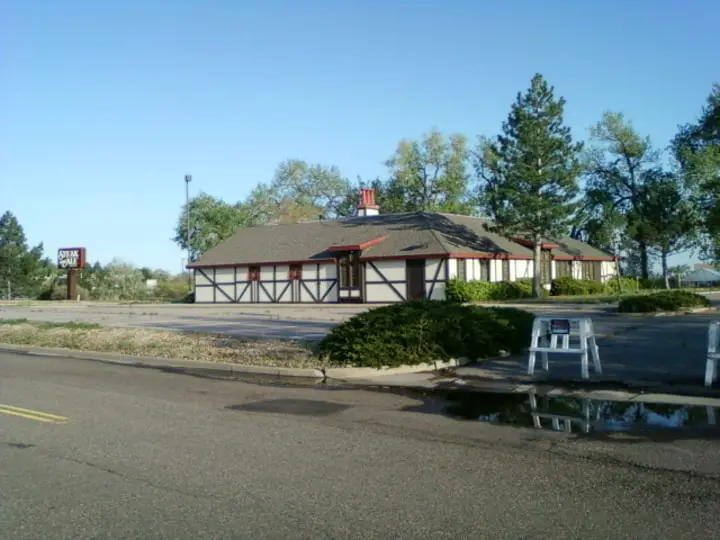
Xnatedawgx/Wikimedia Commons
The Daily Meal says that Steak and Ale was the creation of Norman Brinker, who also was behind Jack in the Box and Chili’s. The first one opened in Dallas, Texas in 1966 and did very well for a decade. Brinker then sold the restaurants to Pilsbury.
NEXT: This burger joint was born out of Bressler’s Ice Cream in an attempt to get into the drive-in business.
16. Henry’s Hamburgers
This burger joint has only one location left in Benton Harbor, Michigan. Its online menu says it offers your classic hamburgers, fries, hot dog, chili dog, and even meal deals like the “The 99 Cent Munchie Of The Month.” Bressler’s Ice Cream started Henry’s Hamburgers in an attempt to cash in on the drive-in business craze.
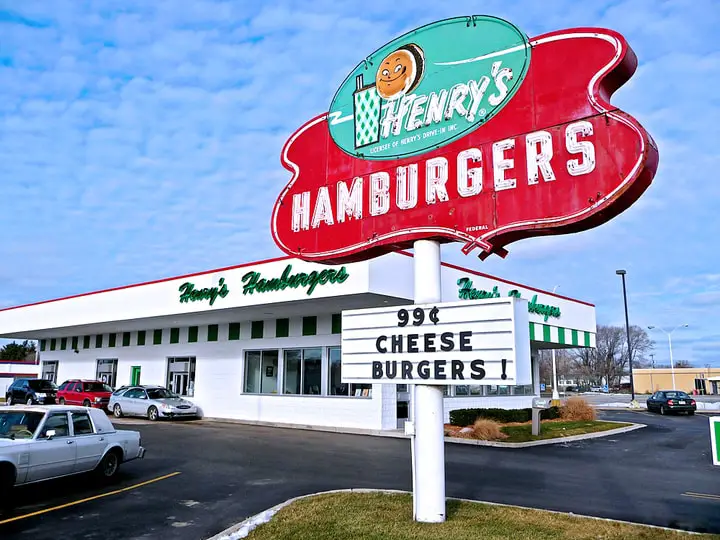
Beached Bum/Wikimedia Commons
After launching in 1954, it expanded quickly in the Chicago area. Its growth slowed down in the 1970s for unclear reasons — something about ownership changes and a controversy around Henry’s using horse meat?! Its demise could also be related to changing consumer tastes and competition.
NEXT: Its name is based on a word meaning a person’s preference in a matter.
17. Druther’s
This eatery’s slogan was “I’d Ruther Go to Druther’s Restaurant.” Catchy, no? Its name is based on the word “druther” which means a person’s preference in a matter. (For example: “If I had my druthers, I’d eat at a Druther’s! But I can’t because they’re out of business…”) Originally, the chain was called “Burger Queen.”
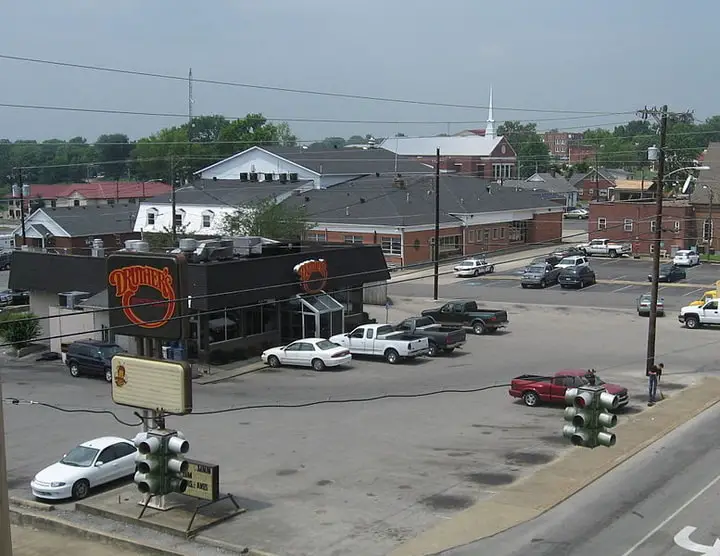
Willp1203/Wikimedia Commons
There’s a fast-food burger joint with a similar name. It’s called Burger King — ever heard of them? In 1990, International Dairy Queen Inc. started buying up the Dairy Queens that Druther’s operated. (Druther’s was its franchise operator.)
NEXT: This slinger of hamburgers was the rival of both Burger King and McDonald’s
18. Red Barn
Although Red Barn was competition at the time for Burger King and McDonald’s, it eventually closed most of its stores. Remaining ones became stores called The Farm. During its heyday, Red Barn “attracted customers with their grilled burgers, fish and deep-fried chicken dishes,” writes Penn Live. As its name suggests, its building was shaped like a barn.
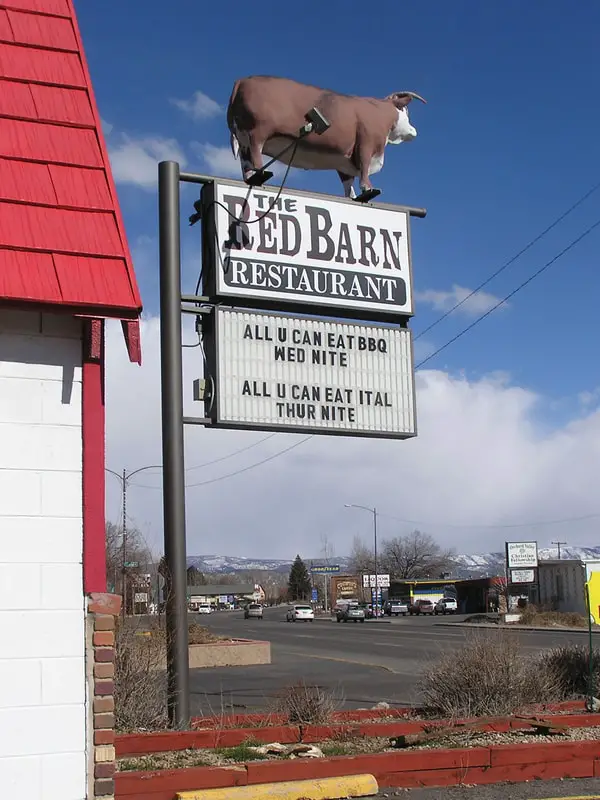
Red Barn/Flickr
Diners ordered food at the counter within the barn — I mean, restaurant — choosing from Barnster quarter-pound burgers, breaded and fried cod, deep-fried chicken, frozen yogurt, fried pies, and other goodies that probably are hard on the arteries.
NEXT: Entertainer Minnie Pearl apologized to her fans constantly for this restaurant flop until the day she died.
19. Minnie Pearl’s Chicken
Named after the actress and comedienne Minnie Pearl (real name Sarah Ophelia Colley), Minnie Pearl’s Chicken expanded to 500 locations in the late 1960s and early 1970s. Like Burger Chef, it expanded too quickly which partly led to its demise, says Business Insider. Also, Minnie’s didn’t have a set menu or recipes.
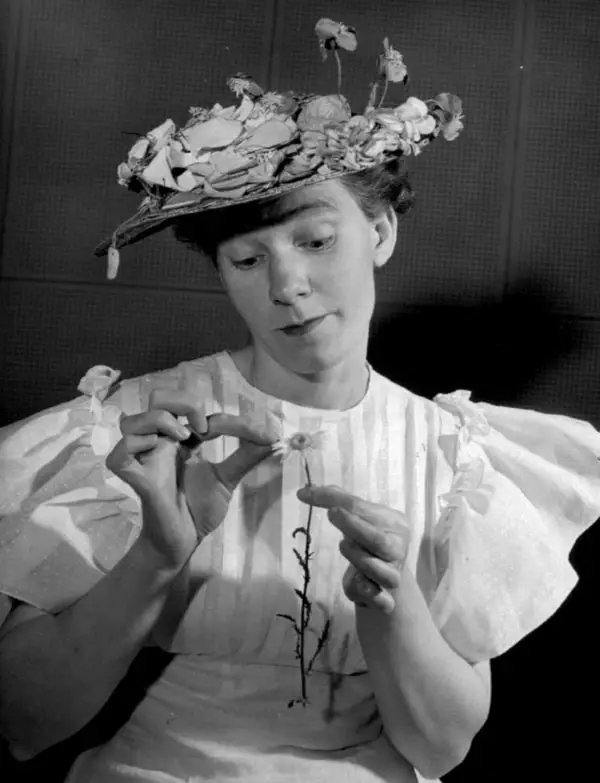
WSM Radio – Grand Ole Opry/Wikimedia Commons
Consumers would have expected a chain restaurant to be the same whether it’s in San Francisco, California or Athens, Georgia. There were regular customer complaints and an SEC investigation into the restaurant’s accounting practices, says Mental Floss.
NEXT: A 1987 Sun Sentinel article basically claimed America wasn’t ready for this chain.
20. D’Lites
This interior press photo shows the D’Lites Of America founder smiling and posing in one of his restaurants. That smile might have turned into a frown once D’Lites started struggling. “D’Lites of America in Margate died from customer neglect,” wrote the Sun Sentinel in 1987. “Americans may talk nutrition at the health spa…”
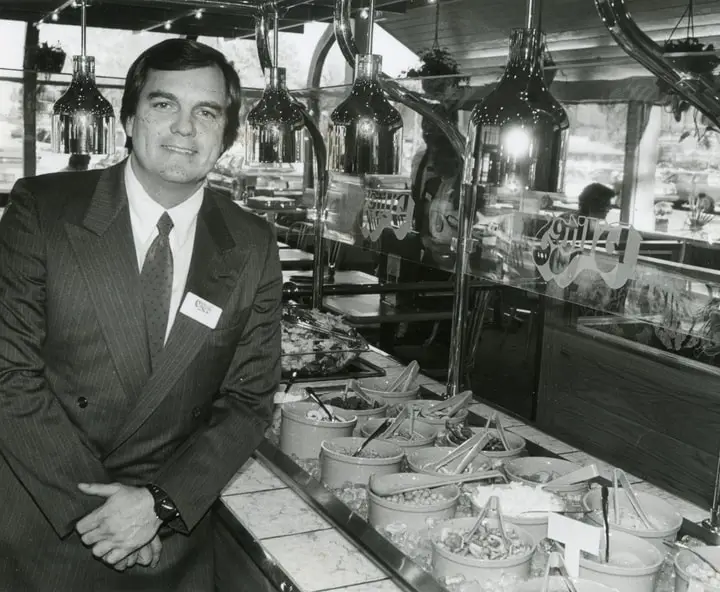
Phillip Pessar/Flickr
“But when they head for a quick dinner, more chow down at McDonald’s or Burger King than D’Lites.” The article ends by proclaiming America wasn’t ready for nutritious fast food. The chain ended up filing for Chapter 11 bankruptcy with most locations becoming Hardee’s.
NEXT: This restaurant chain’s mascot might be creepy to some…
21. Doggie Diner
The dog days are over for the Doggie Diner. The most recognizable part of Doggie Diner would be the strange dogs wearing chef hats that were used as restaurant décor and iconography. The chain mostly sold hot dogs and hamburgers. DoggieDiner.com says the chain started in 1949 in Northern California but sales slowed around 1979.
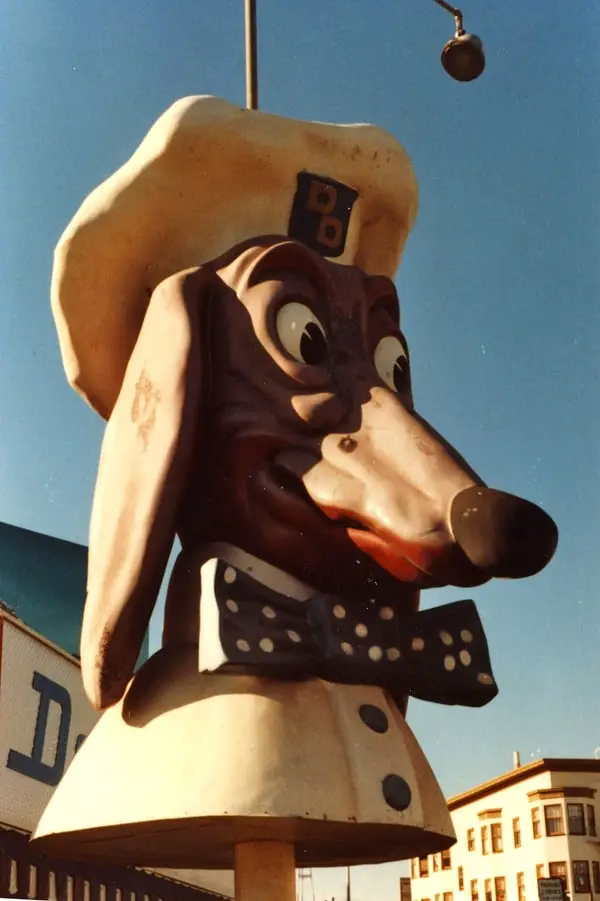
GeorgeLouis/English Wikipedia
Weird California says the doggie heads started to disappear. Some private owners bought up the doggie heads but some still exist in public areas. Weird California says one doggie head is in Streetlight Records in San Jose, one in Boonville and one in Plymouth California.
NEXT: This fast food chain met the same fate as many — competition from other brands!
22. Sandy’s
Journal of Business Leadership, Vol. 1, No. 2 says that Sandy’s was the “ancestor in the Midwest to Hardee’s” with the first store opening in 1958. Its president and chairman of the board, Brick Lundberg, apparently made an effort to visit every store periodically and meet new employees, writes the Journal of Business Leadership.
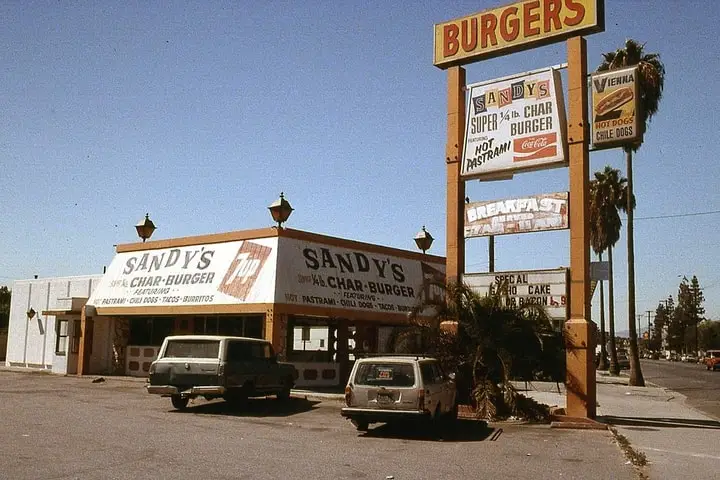
Mountain Mike Johans/Wikimedia Commons
“A combination of inflation and competition drove up costs of land, materials, and labor, cutting into profits,” says the Journal of Business Leadership about some of the reasons behind Sandy’s decline. In the early 1970s, many Sandy’s became Hardee’s.
NEXT: This chain’s most famous dish was their hot dogs steamed in beer.
23. Lum’s
This hot dog chain was the place to go to if you were craving a hot dog steamed in beer. The Miami Herald said there were Lum’s everywhere in South Florida back in the day — Biscayne Boulevard, Lincoln Road, Collins Avenue, State Road 441, etc… Now they’re nowhere to be found.
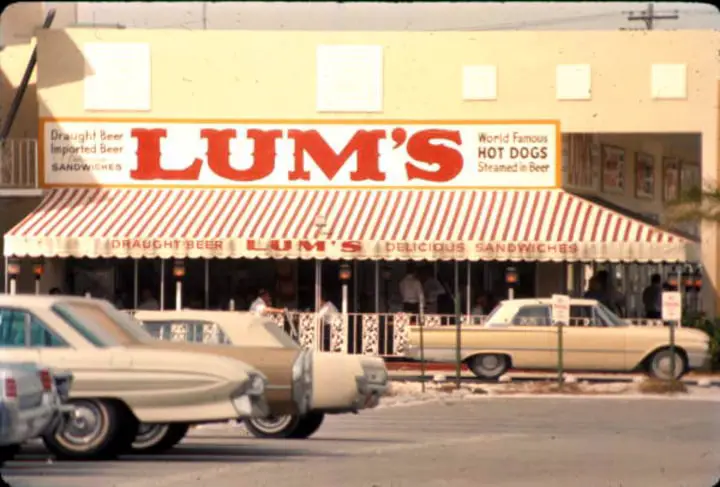
Florida Memory/Flickr
The Miami Herald wrote that the last Lum’s drew crowds all over Florida to try its famous foods. Its owner, Ernst Unterecker, said that diners shared stories of their memories of the chain with wait staff and managers. Started in 1955, Lum’s filed for bankruptcy in 1982.
NEXT: This diner lasted for two decades until closing for good.
24. VIP’S
This was an Oregon-based diner chain. It started in the 1960s but Business Insider said that it closed in 1989 after not being able to compete with fellow diner chain, Denny’s. It was just too similar to Denny’s which was wildly more successful. It closed after two decades according to Eat This, Not That!
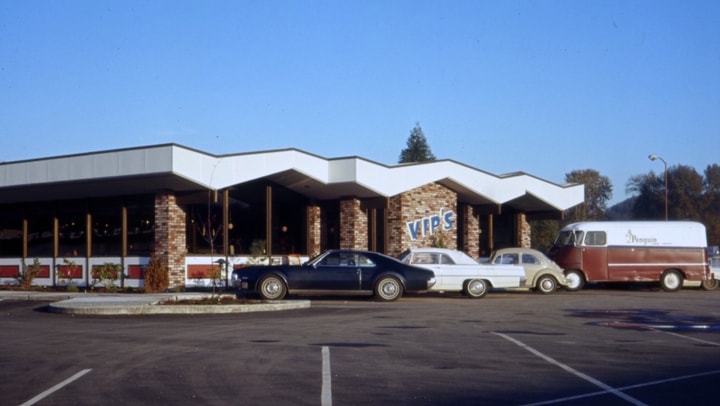
Seattle Municipal Archives/Wikimedia Commons
VIP’s apparently did sell 35 of its restaurants to Denny’s in 1982, said the Eugene Register-Guard in 1984. It sold 16 of its restaurants in 1984 to JB’s Restaurants, leaving itself with just nine restaurants. VIP’s closed officially in 1989.
NEXT: This restaurant chain is mostly a nostalgic thing for the Brits.
25. Wimpy
This restaurant chain once occupied many buildings in the U.K., providing Brits with hamburgers and fries. “The restaurant now seems to occupy, at best, a vague, sentimental presence in the collective British psyche,” wrote VICE in 2014. In Wimpy’s heyday, it had TV ads, a video game, and a blind mascot, Mr. Wimpy that VICE described as “unsettling.”
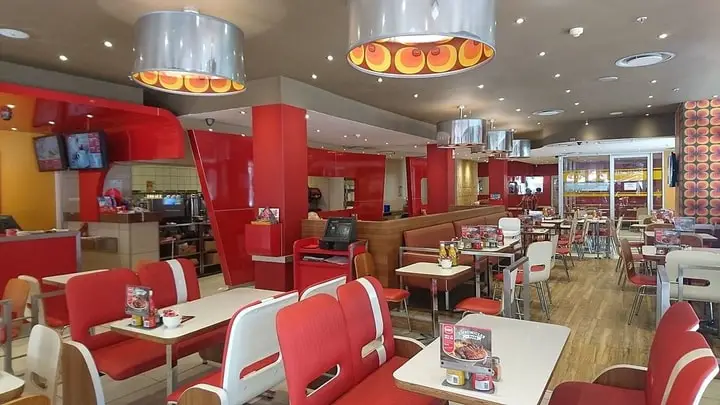
Discott/Wikimedia Commons
By 1990, 200 Wimpy restaurants were converted into what could be considered its American counterpart — Burger King. Wimpy was actually from the U.S. and introduced itself to the U.K. in 1954. The brand is now based in Johannesburg, South Africa.
NEXT: A candy maker started this chain of restaurants.
26. Horne’s
A candy maker named Bill Horne founded this chain of restaurants in 1948, says HighwayHost.org. Through the 1950s, it expanded along routes in the Southeast U.S. focusing on gifts, gas and food. Greyhound bought the chain in the 1960s and changed the brand into motor lodges and improved the restaurant.
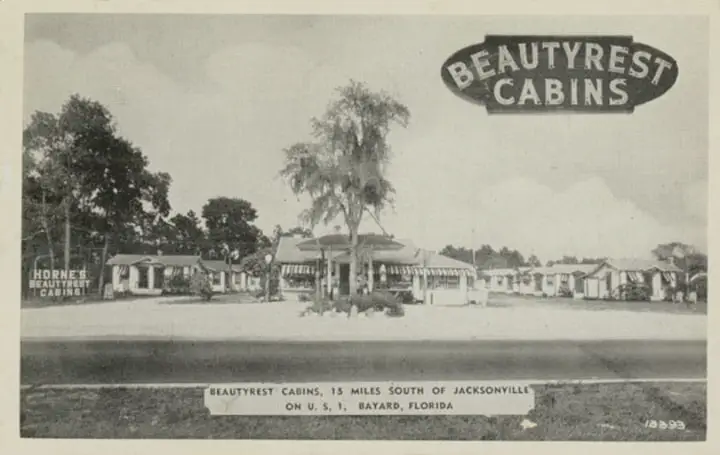
Mgreason/Wikimedia Commons
Its sales exceeded $12.4 million in 1965 but it started declining some years later. As of 1982, the last Horne’s was in Kenly, North Carolina.
NEXT: This restaurant was known for its stunning architecture. Many of its former buildings have been refurbished and used for new concepts like Kitchen 21 in New York City.
27. Childs
This photograph shows a former Childs Restaurant on a cloudy New Years Day looking quite abandoned and dilapidated. Childs was one of the first dining chains in the U.S., contemporaries of Horn & Hardart (see slide number 12). Its buildings were known for their stunning architecture.

Jim Henderson/Wikimedia Commons
Former Childs buildings have been converted into new places of business, including Kitchen 21 on Coney Island. Curbed says the project opened in 2017, offering five different dining and drink concepts including Boardwalk & Vine, Test Kitchen, and Community Clam Bar.
NEXT: This restaurant chain was featured on the hit CBS reality show Undercover Boss.
28. Bikinis Sports Bar & Grill
This was a chain of sports bars and restaurants in Texas. It’s one of those so-called “breastaurants” where scantily clad women serve customers (Hooters might be a more well-known example today). In fact, the restaurants’ CEO actually trademarked the term “breastaurant,” reported the Huffington Post in 2013. The article continues:
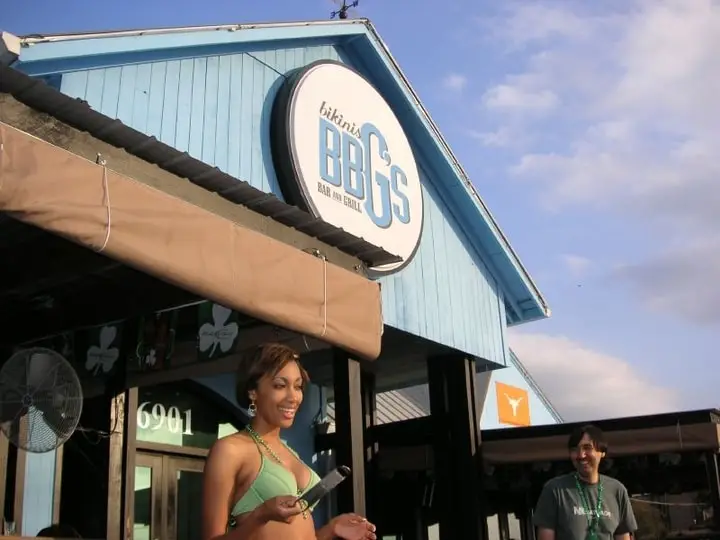
MarkScottAustinTX/Flickr
“[Doug] Guller’s decision may have been fueled by the ‘breastaurant’ industry’s recent surge.” Guller’s behavior on CBS’ Undercover Boss lead to controversy — he fired a waitress on the spot for being candid about not considering this a career job (she didn’t know he was the CEO).
NEXT: This restaurant’s name translates from Spanish to “pretty house.”
29. Casa Bonita
Slinging Tex-Mex fare and family friendliness all around, Casa Bonita was a former chain restaurant that appeared in Oklahoma. One still exists in Lakewood, Colorado at 6715 West Colfax Avenue. The Oklahoman wrote a piece reminiscing upon the Oklahoma City Casa Bonita in 2015. It was there for 25 years until it closed in 1999.
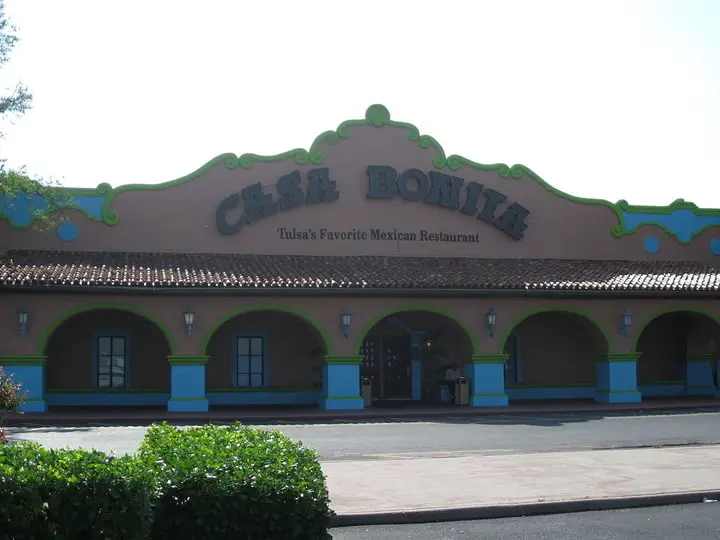
Claire/Wikimedia Commons
“When Casa Bonita opened in 1968, Mexican food was still a novelty in Oklahoma City,” writes the Oklahoman. “The concept was so successful, founder Bill Waugh eventually opened Casa Bonita restaurants just outside of Denver, Little Rock, Ark., Fort Worth, Texas, and in Lakewood, Colo., a Denver suburb.”
NEXT: There’s just one restaurant left of this chain but it has a new location planned to open.
30. House of Pies
Al Lapin Jr. was the man behind chain House of Pies as well as the International House of Pancakes, aka IHOP, says LA Weekly. Lapin also oversaw IHOP’s parent company International Industries Incorporated. LA Weekly goes on to explain House of Pies’ lack of success in the marketplace: “Scared off by some recent franchising failures and scams…”
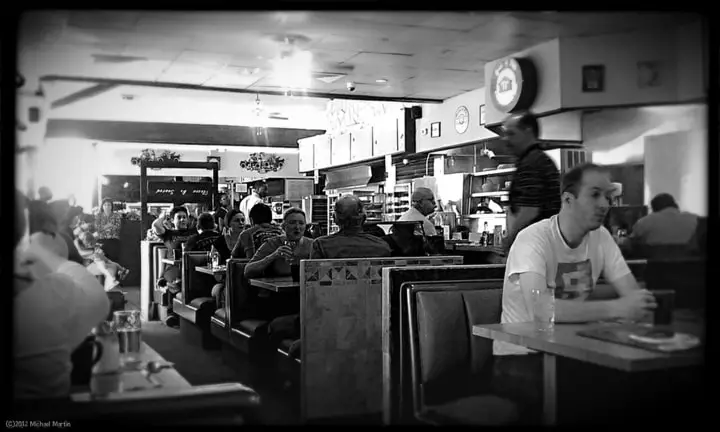
Michael Martin/Wikimedia Commons
“Potential investors were skeptical. Stocks of franchise chain restaurants dropped dramatically on a January 1970 day, with International Industries falling sharply.” Despite this, House of Pies franchises opened up across the country. According to its website, there are two House of Pies locations left in Los Angeles, California — one at 1869 N. Vermont Ave. and one coming soon to 1020 Venice Blvd.